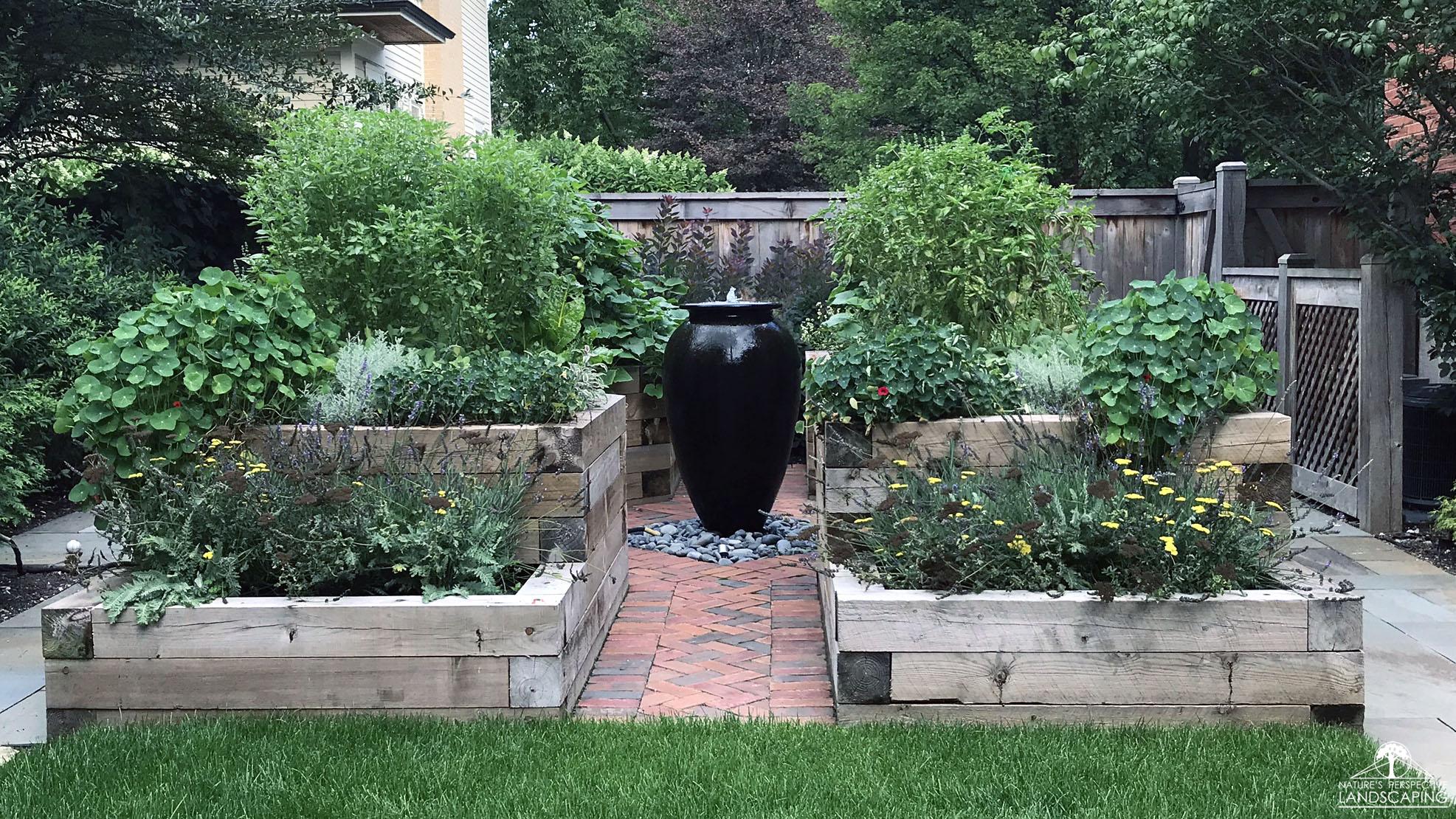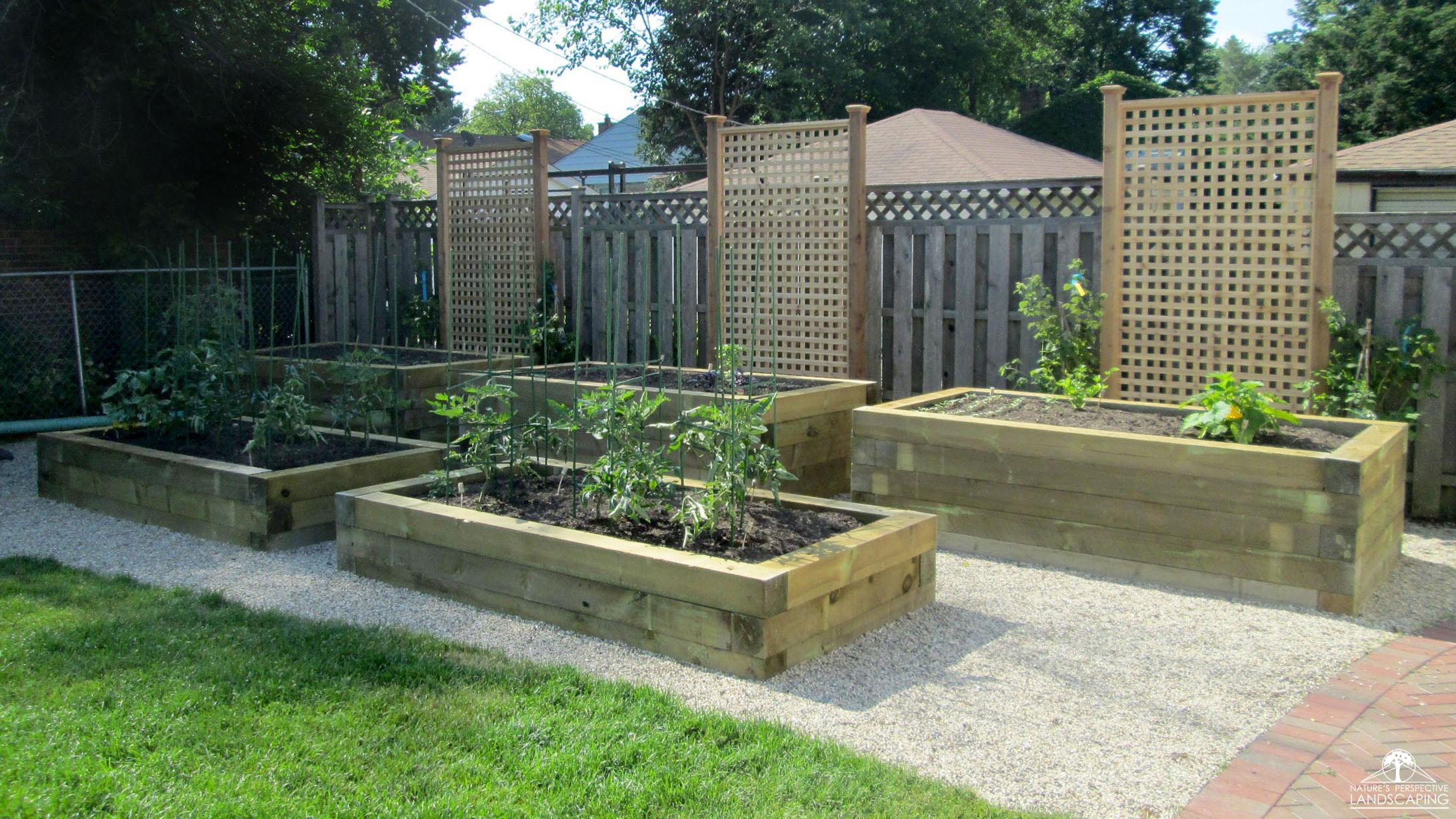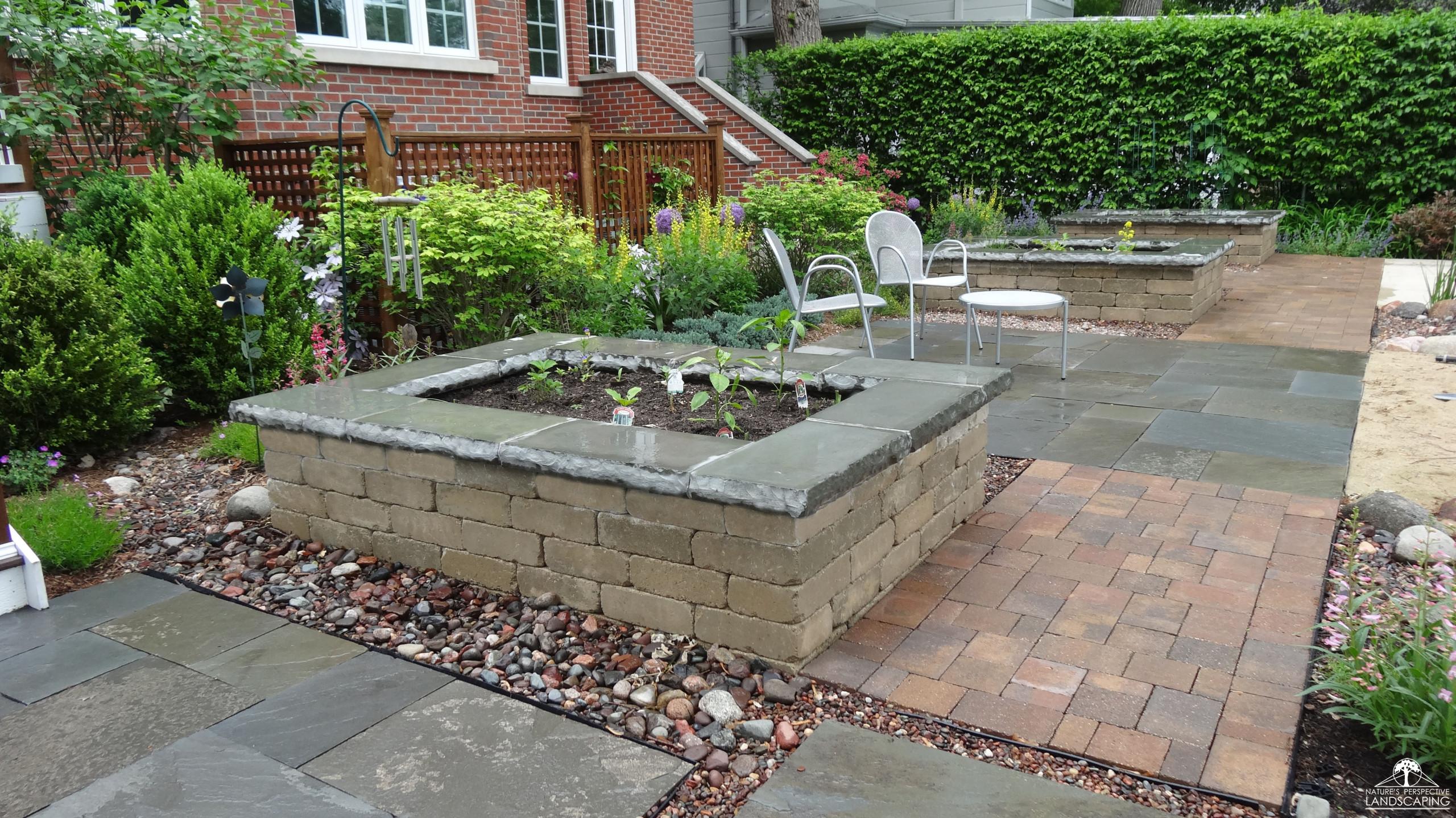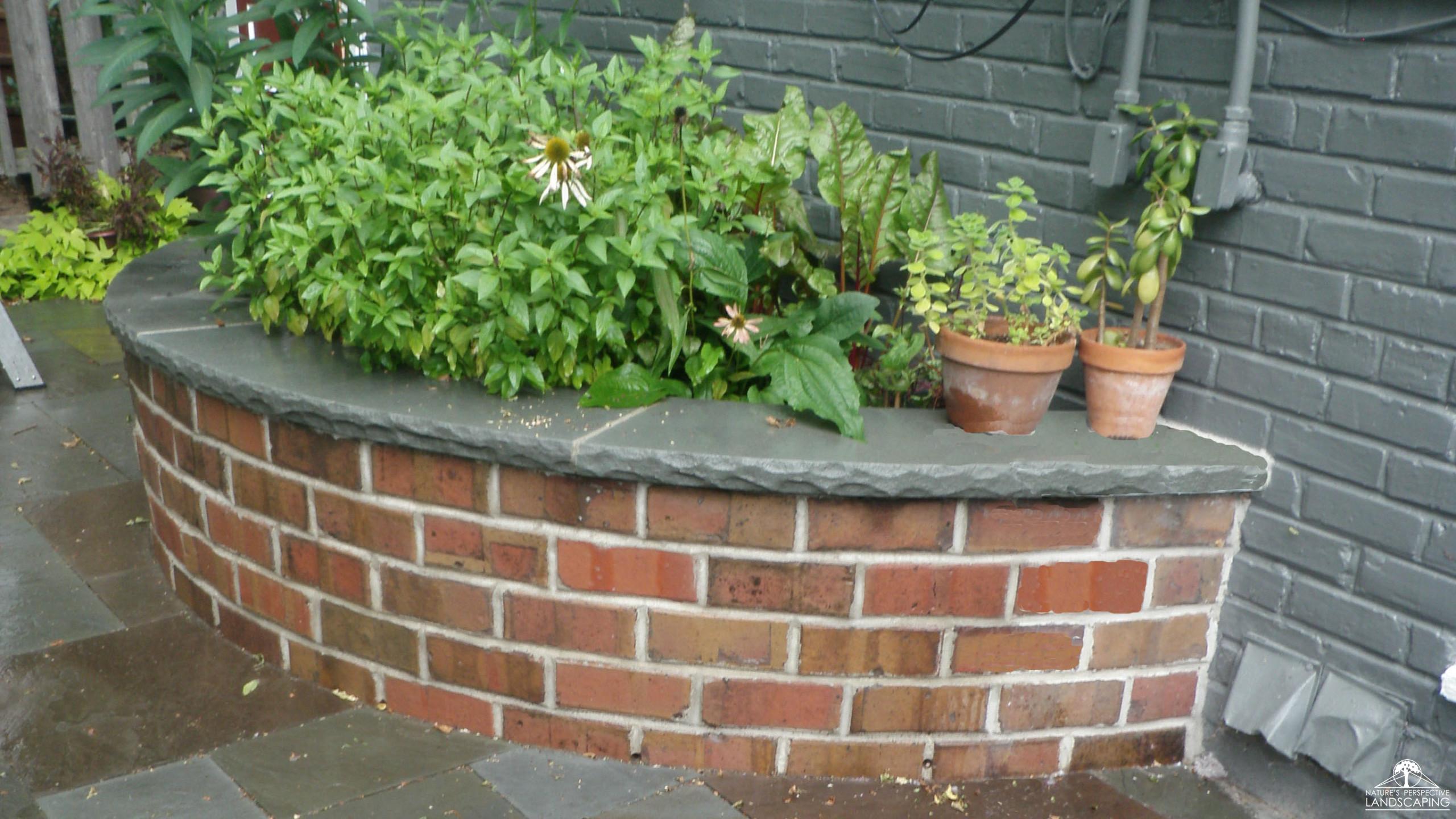
Varying heights of these timber raised planters allow a variety of fruits and vegetables to be grown and accessed easier. The addition of a large bubbling urn creates an elegant focal point.
The idea of picking a vine ripe tomato or cutting lettuce for a salad from your own yard is enticing, isn’t it? The trend of home-grown vegetables has been around for many years, and is relatively easy to incorporate into your backyard. We’ve put together a few key things to consider when planning your own raised vegetable planter including size, watering, drainage, soil, and light conditions.
Size & Material: We prefer to construct raised vegetable gardens of wood or stone. The size and shape can vary but should relate to the available yard space and the amount of vegetables you’d like to grow. We find a 4’ wide x 8’ long planter is sufficient for the average home gardener and recommend planters be least 12” high. This will make tending the garden easier and help keep vegetables away from hungry critters.

Gravel installed around these timber planters create a clean, mud-free path. Cedar trellises behind them allow for vertical growing and add a decorative touch.
Watering & Drainage: This may be one of the most important things to consider when planning your raised vegetable planter. We construct our raised planters to have an open bottom which helps improve drainage and allows the plants ample room to grow and get established. Raised planters tend to dry out more frequently than plants grown directly in the ground. Regardless, we recommend checking your garden daily to make sure it’s getting enough water to thrive. For added success, try combining plants with similar watering and growing requirements.

At 18 inches tall, these planters of modular concrete wall material and copings not only function to grow vegetables but also to offer additional seating.
Soil & Light Conditions: We recommend a mix of topsoil, compost, peat or vermiculite, and a slow release fertilizer to ensure a healthy and robust garden. The soil in raised vegetable planters will typically warm earlier in the spring than soil in the ground – which means cool season vegetables like lettuce can be started a little earlier. Install the planter in an area that gets at least six hours of direct sunlight each day. The larger the planter, the less frequently you will have to water. Almost any type of vegetables can be grown in raised planters. Exceptions are potatoes, whose roots need a lot of room, and corn, which would grow so high that harvesting would be difficult.

A half-round, mortared brick planter with bluestone copings functions as an herb garden, sited near the kitchen.
We hope that these tips will get you on your way to have a bountiful harvest! Please contact us if you’d like to discuss how to incorporate a raised vegetable planter in your yard. Happy gardening.
